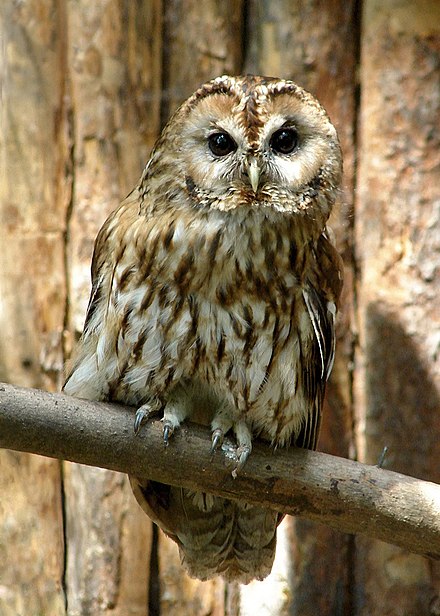Owls refer to a group of birds belonging to the family Owlidae, which are widely noted for their nocturnal activity and characteristic facial shape. The following is detailed information about owls and their living habits:

Face shape: Owls usually have round faces. Due to the shape of the feathers on their faces, they look like they have a pair of obvious eyes and a "cat-head" appearance.
Size: Owls come in various sizes, with the smallest species being about 15 centimeters tall, and the largest species being 70 centimeters tall, such as the eagle owl.
Feathers: Owl feathers are typically soft and dense, which help reduce wind resistance, maintain body temperature, and provide camouflage during night flight.
Geographical distribution: Owls have a wide range of species and are distributed around the world, from tropical areas to polar regions.
Habitat: Owls can be found in a variety of environments, including forests, grasslands, deserts, mountains, and cities. They usually live in trees or in caves.
Diet: Owls feed on small mammals, birds, reptiles and insects. They hunt at night, using their excellent hearing and vision abilities to catch prey.
Nocturnal: Most owls are nocturnal birds, active and hunting at night, while generally resting during the day.
Reproduction: Owls usually live a monogamous life, building nests in tree cavities, rock caves or artificial nests, where they incubate eggs and care for their young.
Sound: Owls have distinctive calls, with some species making a "coo"-like sound, while others have a high-pitched hoot.
There are many types of owls, including many different subspecies, each of which may have different appearance characteristics and living habits.
Owls have special symbolic meaning in different cultures and traditions, and are sometimes seen as omens or symbols of wisdom.
Owls have attracted much attention for their nocturnal activities, special appearance and unique ecological habits. By studying owls, we can better understand their role in ecosystems and enhance protection of them and their habitats.
animal tags: owl
We created this article in conjunction with AI technology, then made sure it was fact-checked and edited by a Animals Top editor.